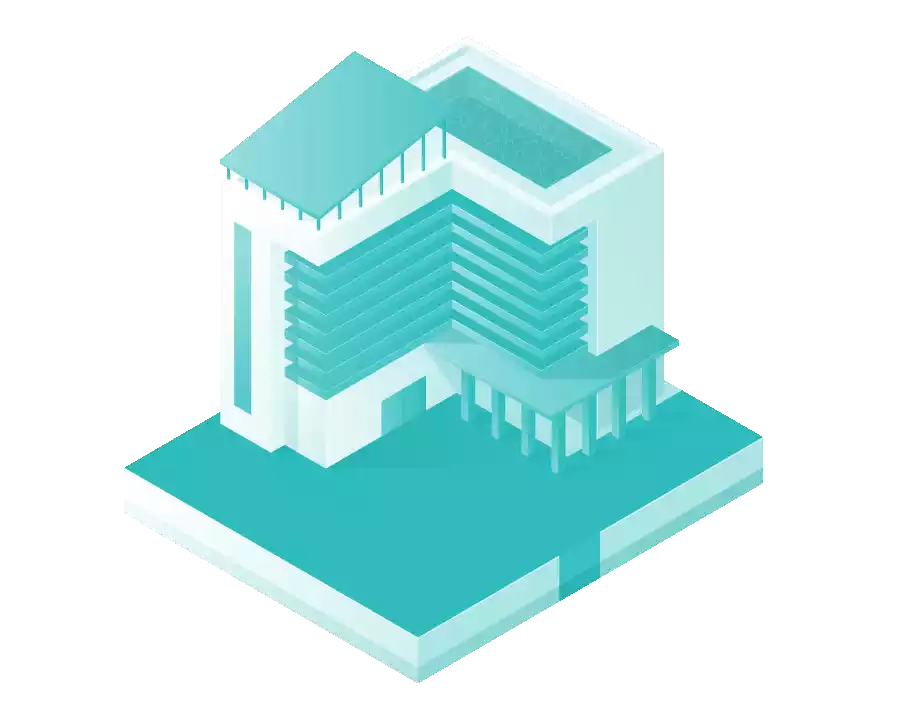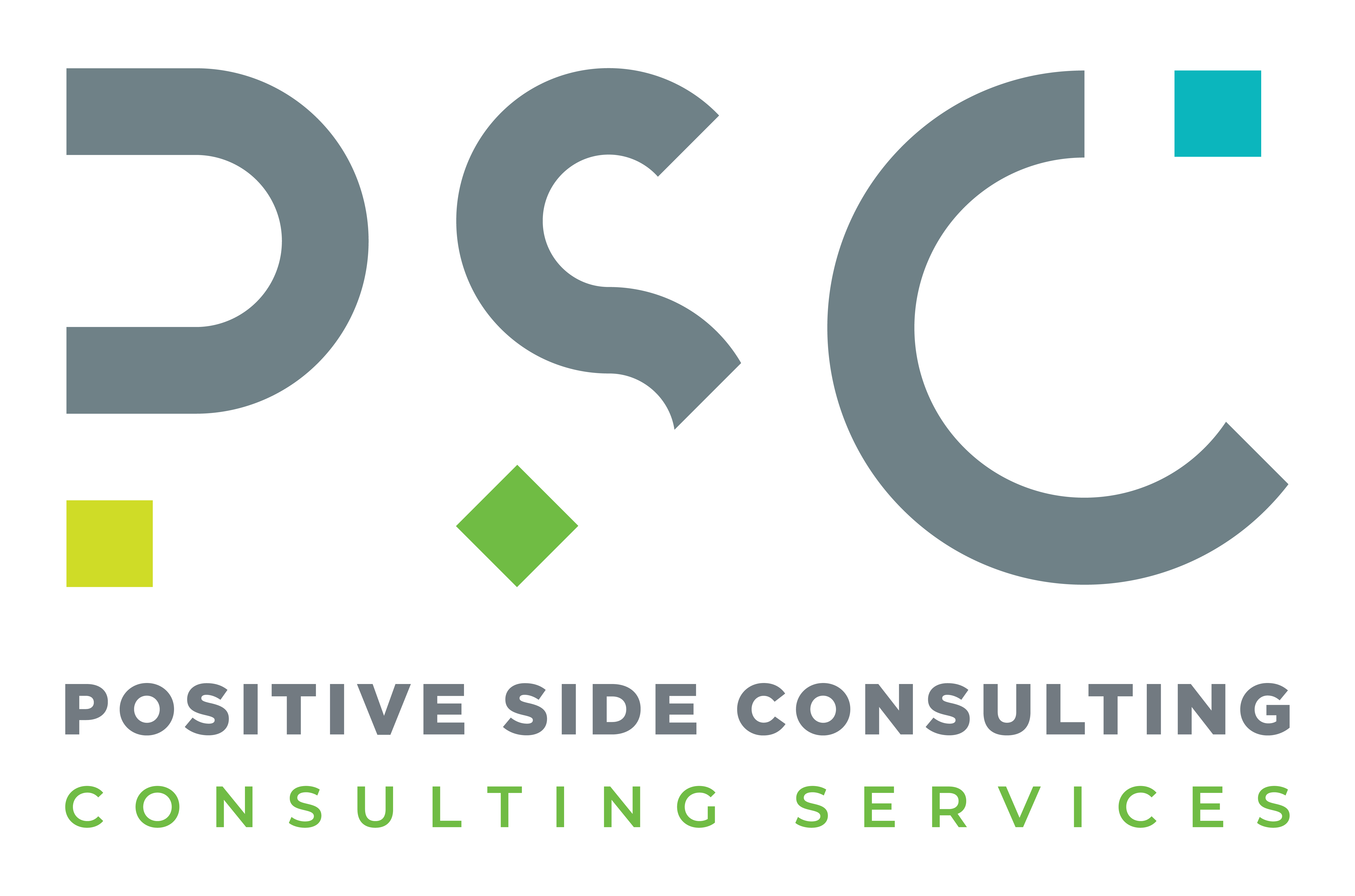Enterprise Architecture consulting at Positive Side Consulting is a deeper vision and understanding of organizational maturity

In the era of rapid digital transformation, the importance of Enterprise Architecture emerges as a crucial factor in guiding and achieving the goals of organizations. At Positive Side Consulting, we work on providing integrated frameworks that help achieve alignment between business, digital transformation strategies, and technological growth. If you aim to achieve your strategic objectives efficiently and effectively, we are here to offer the necessary support. Contact us today to begin our digital transformation journey together.
At Positive Side Consulting, we believe that complexity is not necessarily synonymous with effectiveness. Therefore, we offer a clear and simplified definition of Enterprise Architecture, which is: ‘The practice followed by organizations to develop and implement their strategies through a comprehensive institutional analysis that lays out a roadmap for achieving the mission and institutional vision.’ We are committed to delivering technological solutions that achieve maximum efficiency in operating your core processes and information technology.”
Download the enterprise architecture profile

Enterprise Architecture is a practice and set of controls for studying the current state of an organization and building a roadmap for transformation to a future state to achieve alignment between the business sector (services and processes) and information technology (data, applications, and infrastructure) and the strategic objectives of the organization.
Enterprise Architecture aims to provide a comprehensive and integrated model for designing and guiding the business components and technology of an organization in order to achieve efficiency, coordination, and effective control of its processes, and the successful implementation of digital transformation projects. It also helps in achieving harmony between strategic goals, processes, and the technologies used, which helps in improving the overall performance of the organization..
Enterprise Architecture plays an important role in supporting and accelerating the digital transformation of government entities, through:
- Preparing a comprehensive roadmap and initiatives to enable the organization to build capabilities and bridge gaps in all areas of Enterprise Architecture (business, data, applications, technical infrastructure, integration architecture, and information security).
- Achieving alignment and integration between the business sector and information technology effectively to achieve the vision and strategic goals of the organization.
- Enabling the organization to apply effective governance through providing procedures and controls that regulate changes affecting the business and structure of the organization.
- Defining principles and standards of Enterprise Architecture that contribute to increasing the efficiency of business, processes, applications, and technology.
- Better utilization of the organization’s resources by identifying and enhancing services, applications, and technical components that are reusable or sharable, and avoiding duplication and repetition.

Are you looking for a partner who will guide you towards success?

Using TOGAF methodologies and national frameworks for Enterprise Architecture, the company offers comprehensive consulting services in:
- Preparing a comprehensive roadmap and initiatives to enable the organization to build capabilities and bridge gaps in all areas of Enterprise Architecture (business, data, applications, technical infrastructure, integration architecture, and information security).
- Achieving alignment and integration between the business sector and information technology effectively to achieve the vision and strategic goals of the organization.
- Enabling the organization to apply effective governance through providing procedures and controls that regulate changes affecting the business and structure of the organization.
- Defining principles and standards of Enterprise Architecture that contribute to increasing the efficiency of business, processes, applications, and technology.
- Better utilization of the organization’s resources by identifying and enhancing services, applications, and technical components that are reusable or sharable, and avoiding duplication and repetition.
The Kingdom’s government has established the “Yesser” e-transaction program and followed it with the Digital Government Authority with the aim of developing a governmental methodology for the Enterprise Architecture of the public sector and establishing a framework for its implementation to ensure increasing the readiness and maturity level of the organization’s operations, and developing and integrating government electronic services
1 – National Enterprise Architecture (NEA)
The National Enterprise Architecture framework provides a window for strategic integration and collaboration to effectively implement digital services at a national level. The framework aims to:
- Standardize and organize terminology and the general structure at the national level.
- Create a list of reusable technical contents.
- Establish a list of shared data contents.
The national government framework for Enterprise Architecture and its components offers insightful and useful vision for the development and implementation of digital government and integrated digital services in the future. The framework contains 11 key components, each with a specific role and function, and has direct or indirect relationships with other components. It also describes the reference and descriptive models for government Enterprise Architecture
2 – National Overall Reference Architecture (NORA) – NORA Methodology
NORA describes the activities of building, activating, and developing the Enterprise Architecture through ten main stages implemented sequentially according to the purposes and objectives of the government entity in terms of building and developing the Enterprise Architecture and ensuring its harmony with the Kingdom’s digital transformation plans.


NEA is the national reference for applying Enterprise Architecture in the public sector through unified national practices, standards, methodologies, and controls to support digital transformation in government entities and achieve an integrated smart government with a unified national vision that puts the citizen first. It includes practices and controls concerned with implementing the vision and strategy of the government entity by making the necessary changes to align the goals and business procedures with information technology (applications, data, technical infrastructure) and offers models, standards, and guidelines to enhance the application of Enterprise Architecture and accelerate digital transformation to achieve the vision’s goals.
The objectives of the National Enterprise Architecture (NEA) include:
- Standardizing and organizing terminology and the general structure at the national level.
- Establishing national technical standards and roadmaps to be followed by all.
- Creating a list of reusable application components.
- Creating a list of reusable technical contents.
- Establishing a list of shared data contents.
The National Enterprise Architecture (NEA) framework contains 11 key components as shown in the schematic, each with a specific role and function. Additionally, each component may have a direct or indirect relationship with other components.
Strategy
The strategy element in the national framework meets the core of strategic alignment with national strategic plans and e-government. The strategic element components consider the desired future according to the aforementioned plans and strategically align themselves by setting long-term and short-term plans to achieve that future vision.
Models
The National Enterprise Architecture models represent a high-level classification of perspectives of the main Enterprise Architecture elements and best practices for them. These models facilitate a unified understanding of the entire government business components including performance, applications, data, technologies, security, maturity, etc.
Processes
The processes relate to the daily business management of the Enterprise Architecture, primarily involving the design and monitoring of service delivery processes and process redesign, and depend on the methodology and tools that ensure the processes are effective in meeting the beneficiaries’ requirements.
Governance
The governance of the National Enterprise Architecture revolves around providing strategic directions to achieve the vision, mission, and objectives of the Enterprise Architecture through a specific organizational structure, clear roles and responsibilities, and an effective set of governance and management practices. It includes monitoring and regularly reviewing progress with an understanding of the ongoing changes in economic, social, and technological environments.


NORA describes the activities of building and activating the Enterprise Architecture in government entities in the Kingdom of Saudi Arabia and supports accelerating this implementation and ensuring its harmony with digital transformation plans. It represents a lifecycle consisting of ten main stages that are continually repeated, and these stages are implemented sequentially in accordance with the goals and objectives of the government entity in terms of building and developing the Enterprise Architecture.
Stages of Implementing the Methodology:
- Develop project methodology and strategy.
- Develop an Enterprise Architecture project implementation plan.
- Analyze the current situation.
- Build the Enterprise Architecture framework.
- Build the reference model.
- Build the current model of the Enterprise Architecture.
- Build the future model of the Enterprise Architecture.
- Develop a transition plan.
- Build a management plan for the Enterprise Architecture.
- Implementation and improvement.
- Developing Enterprise Architecture Strategy
- Developing the Enterprise Architecture Plan
- Periodic Review of Current Situation Analysis
- Developing the General Framework for Enterprise Architecture
- Developing and Building Reference Models
- Review and Update Current Structures
- Developing and Building Future Structures
- Updating Enterprise Architecture Outputs
- Developing Business Processes and Procedures for the Enterprise Architecture Office
- Developing, Reviewing, and Monitoring the Transformation Plan
- Preparing Plans for Managing Enterprise Architecture
- Procurement, Installation, and Activation of Leading Enterprise Architecture Tools as Recognized Globally


This stage aims to lay the foundation for the Enterprise Architecture, define its drivers and objectives, and obtain approval from executive management. It also involves educating the organization’s staff about the Enterprise Architecture, its application, and its importance in supporting strategic transformation projects.
Detailed Activities
- Analyze the drivers and purpose of implementing Enterprise Architecture in the organization.
- Analyze modern Enterprise Architecture trends.
- Identify and analyze stakeholder requirements in Enterprise Architecture.
- Assess the maturity of Enterprise Architecture practices in the organization.
- Develop the vision and objectives of Enterprise Architecture in the organization.
- Present the strategic plan for Enterprise Architecture to the relevant committee for adoption.
- Implement an awareness and educational plan about the history, benefits, frameworks, and the national methodology of Enterprise Architecture.
This stage aims to create an implementation plan for Enterprise Architecture, define roles, responsibilities, implementation teams, and obtain approvals and commitments from senior management regarding objectives, timelines, and resources needed for developing Enterprise Architecture.
Detailed Activities
- Define and activate the responsibilities of the Enterprise Architecture Steering Committee and its relationship with the Digital Transformation Committee.
- Define and activate the responsibilities of the Enterprise Architecture work teams within the organization and the committee (Business Architecture, Application and Data Architecture, Technical Architecture).
- Define Enterprise Architecture management procedures (Program Management, Change Management, Performance Management, Capability Management).
- Review and document the objectives, scope, and methodology of Enterprise Architecture.
- Budget for establishing, operating, maintaining, and training for Enterprise Architecture.
- Detail initiatives for establishing Enterprise Architecture.
- Document the importance and benefits of Enterprise Architecture for the organization in planning and implementing projects, managing resources, restructuring processes, ensuring information harmony, and auditing information technology.
- Document the Enterprise Architecture development plan.
- Approve the Enterprise Architecture development plan and its implementation program.

Are you looking for a partner who will guide you towards success?

This stage aims to describe the tasks required to review and analyze different aspects of the current situation from both business and information technology perspectives.
Detailed Activities
- Document stakeholder requirements from Enterprise Architecture.
- Document key issues related to the current internal and external work environment and information technology affecting organizational transformation.
- Evaluate strengths, weaknesses, opportunities, and threats.
This stage aims to design and document the Enterprise Architecture framework based on its strategy, guiding principles, and requirements analysis.
Detailed Activities
- Review the mission, vision, and objectives of Enterprise Architecture.
- Develop guiding principles for Enterprise Architecture.
- Develop and customize the organization’s specific Enterprise Architecture framework, based on TOGAF9 and NORA frameworks, including:
- Main and subsidiary components of the framework.
- Elements of each component, their definitions, and relationships.
- Drawings and perspectives (Artifacts and Viewpoints) for Business Architecture, Application Architecture, Data Architecture, Technical Architecture, Security Architecture.
- Design a mechanism and standards for documenting framework components.
- Design Enterprise Architecture Artifacts.
- Document the reference model for Enterprise Architecture components (Metamodel).
- Document the mechanism for adopting the framework and any changes in it.
- Adopt the framework from the Enterprise Architecture Steering Committee.
- Train the team on the framework.


This stage aims to review and create reference models (Business, Data, Applications, and Technology) related to Enterprise Architecture according to the organization’s requirements, so that the organization has agreed upon unified standards and classifications.
Detailed Activities
- Design reference models for the main components of the framework (Business, Applications, Data, Technical) using the output of the Enterprise Architecture framework description and the National EA Reference Models.
- Design the business reference model (strategy, business functions, services, procedures, policies, structures, roles).
- Design the applications and solutions reference model, including types of applications, e-services, development and deployment environments, business support, and their interaction.
- Design the data reference model including databases, information topics, data repositories, data management tools, rules, analytical tools, and reporting to ensure comprehensive data analysis.
- Design the technical infrastructure reference model including networks, network devices, servers, storage devices, data centers, and their relationship with applications and data.
- Review and approve the reference models for Enterprise Architecture.
This stage aims to review and develop an inventory and documentation of the organization’s current situation from both business (Business Architecture) and information technology (Applications Architecture, Data Architecture, Technical Infrastructure) perspectives, providing a clear understanding and vision of the current business and IT situation.
Detailed Activities
- Business Architecture (procedures, structure, policies, strategy).
- Application and e-service Architecture and integration.
- Information Architecture.
- Technical Infrastructure Architecture (data center, network, operating systems, information security).
- Ensure data integration in the four EA Components.
- Enter data into the Enterprise Architecture tool.
- Analyze the four Enterprise Architecture components to identify areas needing improvement.
- Compare the current state of Enterprise Architecture components in light of the organization’s strategy, related national strategies, digital transformation plans, and Enterprise Architecture principles.
- Identify Enterprise Architecture elements that are unconnected or conflicting with principles or global trends and standards.
- Identify missing capabilities to bridge gaps (e.g., required but not yet implemented applications).
- Opportunities for development due to increased knowledge or national plans.


This stage aims to develop and build the future structure that meets the organization’s needs in the next three to five years from both business (Business Architecture) and information technology (Applications Architecture, Data Architecture, Technical Infrastructure) perspectives.
Detailed Activities
- Document future procedures of the organization after re-engineering them to align with the organization’s strategic plan and analyze their current situation with the responsible departments.
- Analyze and design Application Architecture (to align with updated procedures).
- Design Data Architecture (to align with updated procedures and applications).
- Design Technical Architecture to support Application Architecture, users, and work locations.
This stage aims to update the outputs of the Enterprise Architecture in accordance with the National Enterprise Architecture (NORA) methodology.
Updating the future architecture outputs in the Enterprise Architecture tool includes:
- Business Architecture
- Applications Architecture
- Data Architecture
- Technical Infrastructure Architecture


This stage aims to draw models and work procedures for the business and the steps of the Enterprise Architecture Office’s operations according to the National Enterprise Architecture (NORA) methodology.
Designing and documenting the governance elements of the Enterprise Architecture Office (graphic models and knowledge data) includes:
- Office Services
- Office Procedures
- Office Policies
- Office Structure
- Roles and Responsibilities
This stage aims to develop a transformation plan describing the steps required to move from the current to the future state and how to implement and manage them.
- Identify programs and projects, their dependencies, and estimated costs.
- Determine the priorities of transformation projects and their dependencies using an analysis of the targeted value for each project, the benefits realized from them, and the ease and cost of implementation.
- Design the transformation timeline and divide it into stages, defining projects at each stage according to priorities and costs.
- Identify the necessary technical resources and planned outputs, divided according to the timeline.
- Review the transformation plan and map to approve projects and costs.


This stage aims to prepare plans for how to use and manage Enterprise Architecture to achieve its objectives and ensure its outputs are used by various relevant departments in the organization.
- Define principles for managing Enterprise Architecture.
- Identify the purpose of using Enterprise Architecture (main and subsidiary uses).
- Define the scope of Enterprise Architecture use in the main IT lifecycle stages (IT planning, technical project management, technical operations and asset management, IT user support, IT performance evaluation).
- Identify roles that benefit from and participate in the scope of Enterprise Architecture use and related components.
- Describe use scenarios.
- Describe procedures for managing changes in Enterprise Architecture.
This stage involves choosing, supplying, and implementing a suitable tool to activate the Enterprise Architecture Office through cataloging the organization’s applications, data, and technology and updating them.
- Study requirements for an Enterprise Architecture tool that aligns with the design of the adopted Enterprise Architecture framework.
- Supply, deploy, and maintain a tool for Enterprise Architecture.
- Training on using the tool.
- Use the tool to document current and future components of Enterprise Architecture.

At Positive Side Consulting, we understand the importance of Enterprise Architecture in achieving success and excellence in the modern market. Therefore, we invite you to contact us to discover how our expertise and services can help your organization achieve its strategic goals effectively and efficiently.
At Positive Side Consulting, we offer a wide range of services for efficiently implementing Enterprise Architecture frameworks. From establishing and operating an Enterprise Architecture office to applying global methodologies, we are here to ensure you achieve the highest levels of maturity and efficiency in your Enterprise Architecture. Want to excel in your Enterprise Architecture? Contact Positive Side Consulting today.


At Positive Side Consulting, we believe that digital transformation and Enterprise Architecture are the foundations for the success and distinction of organizations in the modern era. Since our establishment in 2017, we have succeeded in establishing ourselves as a leading company in providing comprehensive consulting in the field of Enterprise Architecture, strategic planning, and other specialized services in Saudi Arabia.
With a team of experts and seasoned consultants, boasting over 35 years of experience, we are ready to provide innovative and effective solutions that align with your goals and meet your aspirations. We work with passion and commitment to add real value to every project we collaborate on with our clients, focusing on achieving mutual interest and creating inspiring success stories..
If you are looking for a reliable partner to guide you towards digital transformation and improve your organization’s Enterprise Architecture, Positive Side Consulting is your ideal choice. We are here to help you achieve your goals and enhance your competitiveness in the changing job market.

Contact us today to begin your journey towards excellence and effective digital transformation with Positive Side Consulting.





